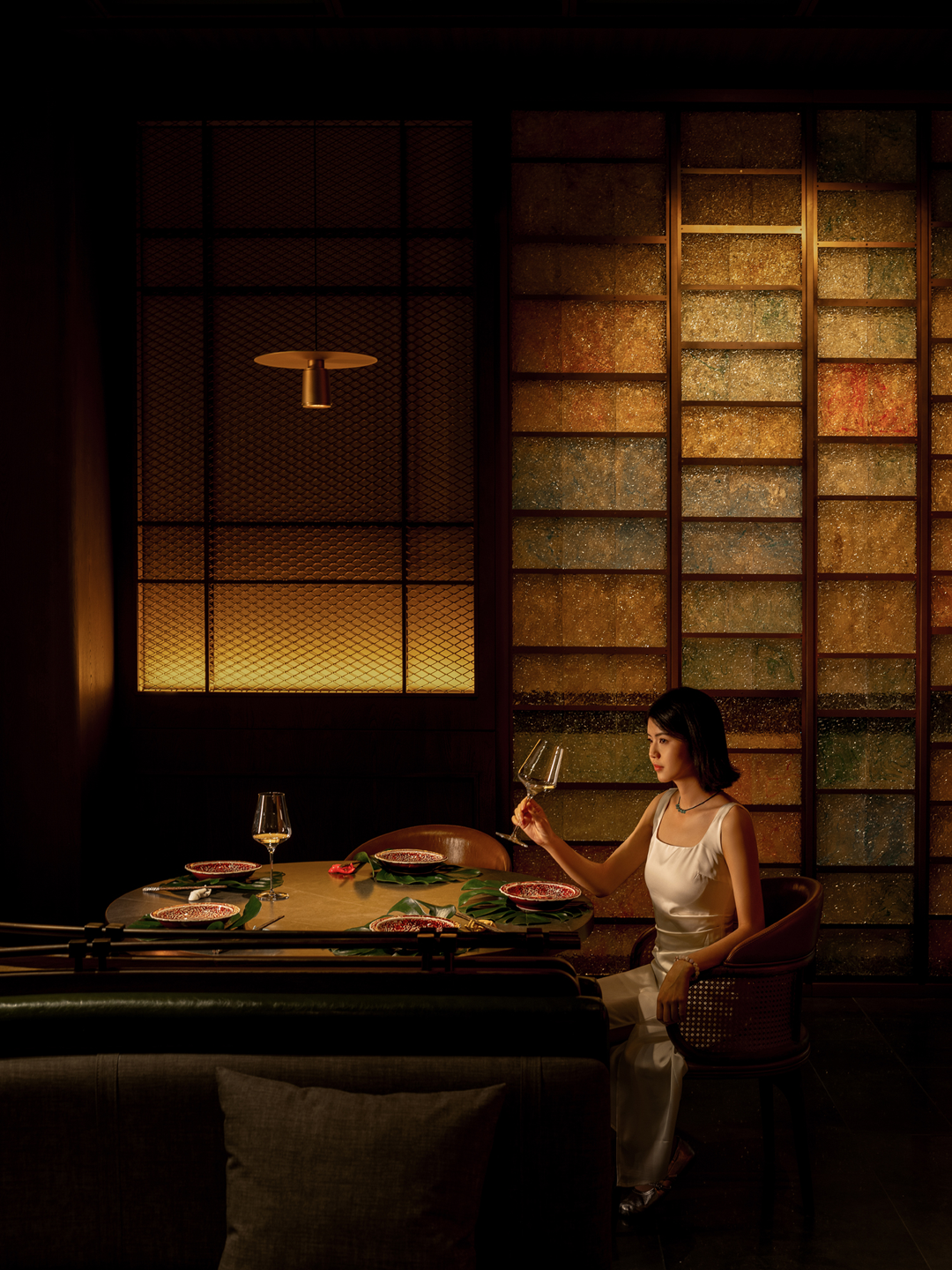Ares Partners Turn a Rural Granary into a Modern Resort of Ascetic Authenticity
2019-03-14 14:25


Located amidst the scenic mountainous landscape of Ninghai County southeast of Hangzhou, China, Miya/LostVilla Huchen Barn Resort has taken over a 1956 grain storage facility which Shanghai-based architects Ares Partners headed by Helen Wang have transformed into a modern retreat of minimalist sensibility while retaining its agrarian heritage. The renovation walks a fine line between ensuring that guests are ensconced in modern, comfortable lodgings and preserving the venue’s ascetic authenticity by seamlessly interweaving the old with the new, while also filtering in its beautiful surroundings. The resort is comprised of six existing different sized buildings that have been renovated with a restrained sophistication, in the midst of which a new building stands out in its abstract, modernist design. Due to their use for grain storage, the existing buildings, predominantly masonry structures made out of stones and bricks, originally only had clerestory windows, built 2.5 metres above ground. The architects selectively enlarged them in both height and width depending on the configuration of the guest rooms, in an attempt to balance the preservation of the original masonry with the desire to grant the interiors an abundance of daylight and views. Meticulous care was also given to removing the multiple layers of white paint that had accumulated over the years on the buildings’ exterior in order to reveal the original stonework on the lower part of the walls.
位于中国杭州东南部宁海县风景秀丽的山区中,米娅/洛斯蒂别墅胡晨谷仓度假村收购了一座1956年的粮食储藏设施,上海的建筑师阿瑞斯合伙公司(Ares Partners)以王海伦为首,在保留其土地遗产的同时,已经转变为一种简约主义情感的现代隐退。此次装修既确保了客人安顿在现代舒适的住宿环境中,又通过无缝地将新旧建筑交织在一起,保持了场馆的苦行真实性,同时也渗透到了美丽的环境中。该度假村由六座现有的不同大小的建筑组成,这些建筑都经过了严格的改造,其中一座新建筑在抽象、现代的设计中脱颖而出。由于用于储粮,现有的建筑物,主要是用石头和砖块建造的砖石结构,最初只有牧师的窗户,在地面上建造2.5米。建筑师们根据客房的配置,有选择地扩大了它们的高度和宽度,试图平衡原始砖石的保存和让室内有充足的日光和景观的愿望。此外,我们亦小心清除建筑物外墙多年来累积的多层白色油漆,以显示墙壁较低部分的原始石料。


Photo by Su Shengliang.
苏胜良摄。


Photo by Su Shengliang.
苏胜良摄。


Photo by Su Shengliang.
苏胜良摄。


Photo by Su Shengliang.
苏胜良摄。


Photo by Su Shengliang.
苏胜良摄。


Photo by Su Shengliang.
苏胜良摄。


Photo by Su Shengliang.
苏胜良摄。


Photo by Su Shengliang.
苏胜良摄。
Unlike the existing buildings that feature traditional gable roofs and rectangular floor plans, the newly built addition, which stands in front of the resort’s entrance in the place of a demolished building from the 1970s, is designed as a prismatic volume that has been shaped in response to its surroundings. In order to avoid obstructing the mountain views as guests enter the grounds, the building gradually increases in height from a single-storey where the reception is located, to two floors housing the tea room, which enjoys panoramic views courtesy of wide, floor-to-ceiling windows. Despite its angular shape and modernist sensibility, the all-white structure harmoniously blends in with the revamped rural architecture and the verdant hills beyond. The building on the west of the reception houses the resort's restaurant and lounge area under a meticuslously restored timber roof structure, while at the back a generous terrace and outdoor pool offers guests the chance to take in the surrounding scenery in style.
与传统的山墙屋顶和矩形平面图相区别的现有建筑不同,新建造的建筑是在从上世纪70年代拆除建筑的地方的大门的前面建造的,它被设计成一个棱柱形的体积,它响应于它的周围而成形。为了避免在客人进入地面时阻碍山景,建筑物的高度从接待处的单层逐渐增加,到两个楼层,容纳茶水间,房间可以欣赏到宽敞的楼层到天花板的全景。尽管它的角度和现代主义的敏感性,全白的结构与改造后的乡村建筑和青翠的山间和谐地融合在一起。在接待处西边的大楼里,度假村的餐厅和休息室在精心修复的木材屋顶结构下面,而在后面,一个宽大的露台和室外游泳池让客人有机会在周围的风景中采取风格。


Photo by Su Shengliang.
苏胜良摄。


Photo by Su Shengliang.
苏胜良摄。


Photo by Su Shengliang.
苏胜良摄。


Photo by Su Shengliang.
苏胜良摄。


Photo by Su Shengliang.
苏胜良摄。


Photo by Su Shengliang.
苏胜良摄。


Photo by Su Shengliang.
苏胜良摄。
Inside, the original timber roof structures have been revealed by removing the false ceilings to now function as a lyrical reminder of the estate’s history while imbuing the spaces with a sense of glorious spaciousness. The weathered roof trusses and timber posts, supported where necessary by red-painted steel beams, stand in juxtaposition to the minimalist décor and sparse modern furniture while the smooth, light-toned timber panelling and muted off-white and grey hues of the colour-washed walls and screed floors provide a soothing ambience. All twenty-one guest rooms feature en-suite bathrooms that have been designed as rooms within a room, providing a more intimate scale within the confines of the double-height suites, while some also enjoy access to private balconies and sun rooms whose jagged outlines create a variety of viewpoints that bring the guests ever closer to the natural surroundings.
在里面,原来的木材屋顶结构已经被揭示,拆除虚假天花板,现在作为抒情提醒房地产的历史,同时赋予空间一种光荣的宽敞感。风化的屋顶桁架和木材柱,必要时由红色的钢梁支撑,与简约装饰和稀疏的现代家具并置,而光滑、浅色的木材镶板和柔和的色彩-白色和灰色的彩色墙壁和平板地板-提供了一种舒缓的氛围。所有21间客房都设有套房浴室,设计成一间客房内的房间,在双高套房的范围内提供了更亲密的比例,有些客房还可以进入私人阳台和太阳房,其锯齿状的轮廓创造了各种不同的观点,使客人更接近自然环境。


Photo by Su Shengliang.
苏胜良摄。


Photo by Su Shengliang.
苏胜良摄。


Photo by Su Shengliang.
苏胜良摄。


Photo by Su Shengliang.
苏胜良摄。


Photo by Su Shengliang.
苏胜良摄。


Photo by Su Shengliang.
苏胜良摄。


Photo by Su Shengliang.
苏胜良摄。


Photo by Su Shengliang.
苏胜良摄。


Photo by Su Shengliang.
苏胜良摄。


Photo by Su Shengliang.
苏胜良摄。


Photo by Su Shengliang.
苏胜良摄。


Photo by Su Shengliang.
苏胜良摄。


Photo by Su Shengliang.
苏胜良摄。


Photo by Su Shengliang.
苏胜良摄。


Photo by Su Shengliang.
苏胜良摄。


Photo by Su Shengliang.
苏胜良摄。


Photo by Su Shengliang.
苏胜良摄。


Photo by Su Shengliang.
苏胜良摄。
keywords:Architecture
关键词:建筑
























